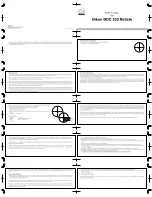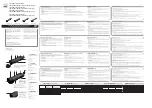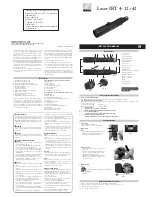
UNDERSTANDING THE FIELD AND
MAGNIFICATION
The STELESCOPE 70 eyepieces make it possible to alter the
magnification and field of vision.
Magnification
To calculate the magnification of a given telescope and eyepiece
combination, take the focal length F of the telescope and divide it
by the focal length f of the eyepiece. The resulting number is the
magnification factor.
M = F/f
The STELESCOPE 70 comes with two Kellner eyepieces of 20 mm
and 9 mm focal length. The focal length of the optical tube is
900 mm, which allow eyepiece magnifications of:
• 900/20 = 45 times for the 20 mm eyepiece;
• 900/9 = 100 times for the 9 mm eyepiece.
The range of eyepieces can be extended to provide a wider
choice of magnifications. Any given telescope aperture has a limit
magnification. Any additional detail beyond this limit magnification
is not visible and the image quality will even deteriorate
significantly. This maximum magnification is about twice the scope
aperture. STELESCOPE 70 with a 70 mm aperture recommends
a magnification that does not exceed 140 to 150 times. Such
a magnification can only be used under conditions of perfect
atmospheric stability (absence of turbulence), i.e. very rarely.
A magnification of about 100 times (obtained with the 9 mm
eyepiece) will often be the maximum.
True Field of the Eyepiece
The true field of view of the eyepiece makes it possible to know
the surface area of the sky observed and therefore estimate the
size of the objects. It is calculated with the apparent field of view of
the eyepiece (this value is provided by the manufacturer) and the
magnification M obtained with this eyepiece on a specific telescope.
The true field is expressed in degrees and arc-minutes.
True field = Apparent field / M
The eyepieces supplied with the STELESCOPE 70 have an
apparent field of view of 45°. Their true fields when used with
STELESCOPE 70 are therefore:
• 45/45 = 1° for the 20 mm Kellner eyepiece;
• 45/100 = 0° 27' for the 9 mm Kellner eyepiece.
11






































